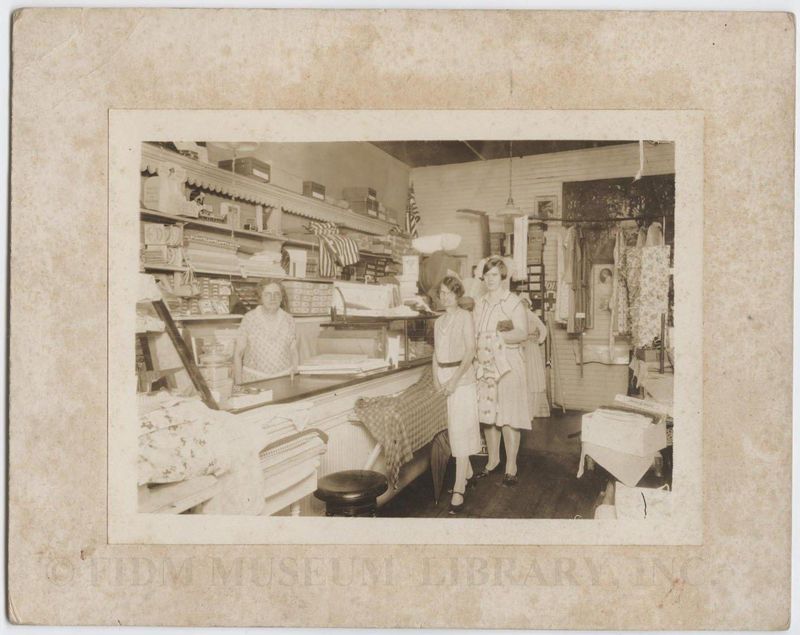Shopping
Did you brave the crowds to do a bit of Black Friday shopping? If so, you probably visited a department store, boutique or perhaps a local craft fair. Or maybe you waited until today, Cyber Monday, to do your shopping online. Did any of the retail outlets you visited resemble the late 1920s dry goods store pictured below? Though it might be a bit difficult to see, note the many bolts of fabric, one of which is being examined by the woman in the center of the image. Notice also the ready-made garments, hanging on the rack in front of the window.
 Interior of a dry goods store Late 1920s Gift of Steven Porterfield 2009.897.135
Interior of a dry goods store Late 1920s Gift of Steven Porterfield 2009.897.135
Dry-goods stores are largely a thing of the past, having been surpassed by big-box retailers and elaborate shopping malls. Called "dry goods stores" because the items sold didn't require special handling or temperatures, they retailed a variety of dress-related items. These included fabric yardage and the ribbons, lace and feathers used to embellish garments. They also retailed other small items such as sewing notions, stockings or men's neckwear. "Fancy goods," such as inexpensive jewelry and knickknacks, were sold during the holiday season. Large dry good stores featured individual departments for each type of trim and fabric. Along with their function as retail outlets, many dry goods stores served as a hub of community activity. The FIDM Museum image above dates from the late 1920s, the final days of the dry goods store. Beginning in the mid-nineteenth century, dry goods stores began to merge with other specialized retailers, ultimately resulting in the modern department store. Many of the founders of the earliest department stores, including Rowland Macy of the ubiquitous Macy's, either owned or worked at dry goods stores. Department stores served an increasingly urban population, who didn't have the skills, time or space to produce the varied items needed to stock the modern home. Residents of small, rural towns supported dry goods stores until the 1950s, when automobiles and an improved highway system led to the development of the destination mall. A final remnant of the dry goods store can be found in the expression "getting down to brass tacks." To assist in measuring lengths of fabric, many dry goods stores supposedly had tacks nailed into their counter at set measurements. When a customer wanted to purchase a piece of fabric, the clerk would "get down to brass tacks" by measuring the desired length of fabric.
Hendrickson, Robert. Grand Emporiums: The Illustrated History of America's Great Department Stores. New York: Stein & Day, 1981. Whitaker, Jan. Service and Style: How the American Department Store Fashioned the Middle Class. New York: St. Martin's Press, 2006.